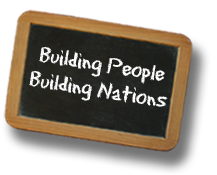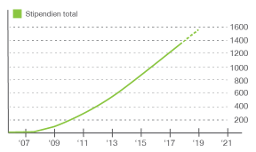Our clear focus on sustainable impact and newly launched goal to empower 1'000 Young Entrepreneurs have allowed us to take the lead.
Blog
Where are we on our road to achieve inclusive and quality education for everybody by 2030?
Posted on 02/28/2017 at 11:32AM
Written by Nora Leonardi, Aiducator.
UNESCO reports on the progress towards achieving Sustainable Development Goal 4 (SDG4), which is to ensure inclusive and equitable access to quality primary and secondary education for all girls and boys by 2030. Today only 14% of adolescents complete secondary school in low-income countries and among the poorest this drops to 2%. If current trends continue, SDG4 – which lies at the very heart of sustainable development — will only be reached a full 50 years later. The time to act is now!
The Millenium Development Goal of achieving universal primary education by 2015 was missed: In 2013, 59 million children still remained out of school. In 2015, the UN adopted the 17 Sustainable Development Goals, one of which focused on education, to close the gap. Free, inclusive and equitable quality primary and secondary education for all was to be reached by 2030.
Recently, UNESCO published a report on the current status and made a prognosis for the future. It is not an uplifting story: If the current trend continue, children will universally complete primary, lower secondary and upper secondary school only by 2042, 2059 and 2084, respectively. This means we are a full 50 years behind schedule.
Worse, low-income countries are miles behind: In 2008-2014, only 51% of all children completed primary school. For the poorest 20%, the completion rate even dropped to 28%. Obstacles to educational attainment are nearly insurmountable for many: no money, no books at home or facilities with no electricity are just a few of them. This is no news to Aiducation scholars:

Natasha, 16, Mombasa, Kenya: “In primary I learnt through hardships. Sometimes no fees, no books and also no uniforms.”

Francis, 15, from Kilifi, Kenya: “We had no electricity at home and me and my sister often went to school early so we could learn with light.”
It gets still worse for secondary school: In 2008-2014, only 27% and 14% of adolescents in low-income countries completed lower and upper secondary school, respectively. The numbers for the poorest adolescents drop to a measly 10% and 2%, with an even larger gap for girls.
In contrast, in high-income countries a full 74% of the poorest adolescents complete secondary education.
Completion rate by education level, income group, sex, and wealth, 2008-2014. High resolution table here.
These results are alarming. Education is at the heart of sustainable development. W. Hirche, board member of UNESCO Germany, shares these words with us : “The world community must accelerate progress now. Education is indispensable for development. It provides the necessary competencies to meet global challenges like climate change, poverty and water scarcity, and to shape its own environment in a sustainable manner.”
He is right: Education makes people aware of environmental issues, lifts people out of poverty, improves health outcomes, reduces violence and increases gender equality. UNESCO’s report urges its readers to not doom the young generation to poverty and instability.
The report ends with an urgent call for financing to turn the situation around: Development aid for education has dropped since 2009 and this ‘underinvestment’ jeopardizes our world’s future sustainable development and peace.
Tags: Background story



 Jetzt spenden
Jetzt spenden 













